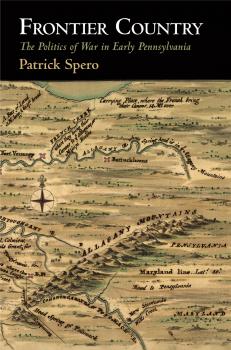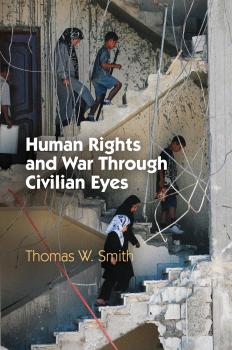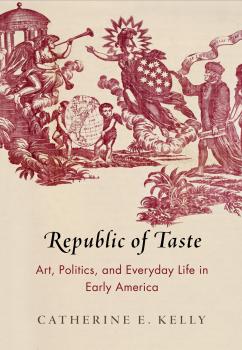ТОП просматриваемых книг сайта:
ЛИТМИР - LITMIR.BIZ - Электронная библиотека
Скачивание или чтение онлайн электронных книг.Аннотация
In Frontier Country , Patrick Spero addresses one of the most important and controversial subjects in American history: the frontier. Countering the modern conception of the American frontier as an area of expansion, Spero employs the eighteenth-century meaning of the term to show how colonists understood it as a vulnerable, militarized boundary. The Pennsylvania frontier, Spero argues, was constituted through conflicts not only between colonists and Native Americans but also among neighboring British colonies. These violent encounters created what Spero describes as a distinctive «frontier society» on the eve of the American Revolution that transformed the once-peaceful colony of Pennsylvania into a «frontier country.» Spero narrates Pennsylvania's story through a sequence of formative but until now largely overlooked confrontations: an eight-year-long border war between Maryland and Pennsylvania in the 1730s; the Seven Years' War and conflicts with Native Americans in the 1750s; a series of frontier rebellions in the 1760s that rocked the colony and its governing elite; and wars Pennsylvania fought with Virginia and Connecticut in the 1770s over its western and northern borders. Deploying innovative data-mining and GIS-mapping techniques to produce a series of customized maps, he illustrates the growth and shifting locations of frontiers over time. Synthesizing the tensions between high and low politics and between eastern and western regions in Pennsylvania before the Revolution, Spero recasts the importance of frontiers to the development of colonial America and the origins of American Independence.
Аннотация
International lawyers and ethicists have long judged wars from the perspective of the state and its actions, developing international humanitarian law by asking such questions as «Are the belligerents justified in entering the conflict?» and «How should they conduct themselves during the war's execution?» and «When civilian noncombatants are harmed, who is responsible for their suffering?» Human Rights and War Through Civilian Eyes reimagines the ethics of war from the standpoint of its collateral victims, focusing on the effects of war on individuals—on those who are terrorized, or killed, or whose lives are violently disrupted. Upholding a human rights analysis of war, Thomas W. Smith conveys vividly the depth of human loss and the narrowing of everyday life brought about by armed conflict. Through riveting case studies of the Iraq War and the recent Gaza conflicts, Smith shows how even combatants who profess to follow the laws of war often engage in appalling violence and brutality, cutting short civilian lives, ruining economies, rending social fabrics, and collapsing public infrastructure. A focus on the human dimension of warfare makes clear the limits of international humanitarian law, and underscores how human rights perspectives increase its efficacy. At a moment when liberal states are rethinking the ethics of war as they seek to extricate themselves from unjust or unwise conflicts and taking on the responsibility to intervene to protect vulnerable people from slaughter, Human Rights and War helps us see with bracing clarity the devastating impact of war on innocent people.
Аннотация
In 1818, with a single essay of vast scope and stunning detail, Leopold Zunz launched the turn to history in modern Judaism. Despite unending setbacks, he persevered for more than five decades to produce a body of enduring scholarship that would inspire young Jews streaming into German universities and alter forever the understanding of Judaism. By the time of his death in 1886, his vision and labor had given rise to a historical discourse and intellectual movement that devolved into vibrant sub-fields as it expanded to other geographic centers of Jewish life. Yet Zunz was a part-time scholar, at best, in search of employment that would leave him time to study. In addition to his pioneering scholarship, he was as deeply engaged in ending the political tutelage of German Christians as the civil disabilities of German Jews. And to his credit, these commitments did not come at the expense of his loyalty to the Jewish community, which he was ever ready to serve. Zunz once quipped that «those who have read my books are far from knowing me.» To complement his books, Zunz left behind a treasure trove of notes, letters and papers, documents that the distinguished scholar of German Jewish culture, Ismar Schorsch, has zealously utilized to write this, the first full-fledged biography of a remarkable man.
Аннотация
What shall we make of medieval English lyrics? They have no fixed line or meter, no consistent point of view, and their content may seem misaligned with the other texts in manuscripts in which they are found. Yet in Lyric Tactics , Ingrid Nelson argues that the lyric poetry of later medieval England is a distinct genre defined not by its poetic features—rhyme, meter, and stanza forms—but by its modes of writing and performance, which are ad hoc, improvisatory, and situational. Nelson looks at anonymous devotional and love poems that circulated in manuscripts of practical, religious, and literary material or were embedded in popular, courtly, and liturgical works. For her, the poems' abilities to participate in multiple modes of transmission are «lyric tactics,» responsive and contingent modes of practice that emerge in opposition to institutional or poetic norms. Working across the three languages of medieval England (English, French, and Latin), Nelson examines the tactics of poetic voice in the trilingual texts of British Library MS Harley 2253, which contains the well-known English «Harley lyrics.» In a study of the English hymns and French lyrics of the commonplace book of William Herebert, she unearths the moral implications of lyric tactics for the friars who produced and disseminated them. And last, she examines the work of Geoffrey Chaucer and shows how his introduction of Continental poetic forms such as the balade and the rondeau suggests continuity with rather than a break from earlier English lyric. Combining literary analysis, manuscript studies, and cultural history with modern social theory, Ingrid Nelson demonstrates that medieval lyric poetry formed a crucial part of the fabric of later medieval English society.
Аннотация
Representations of Catholic women appear with surprising frequency in the literature of post-Reformation England. Playwrights and poets from William Shakespeare to Andrew Marvell invoke the figure of the nun to powerful and often perplexing effect, and works that never directly address female Catholicism, such as Christopher Marlowe's Hero and Leander , share a discourse with contemporary debates regarding the status of recusant women. Catholic Englishwomen, whether living in convents on the European continent or as recusants in their own country, contributed to these debates, but even as their writings addressed the central religious and political issues of their time, their contributions were effaced and now are largely forgotten. Exploring the writings of Catholic women in conversation with those of Shakespeare, Marvell, Marlowe, Donne, and other canonical authors, Beyond the Cloister shows that nuns and recusants were centrally important to the development of English literature. The defining narratives of early modern England cast nuns as the relics of an unenlightened past and equated Catholic femininity with the dangerous charms of the Whore of Babylon. With careful attention to literary figurations of Catholic femininity and to the vibrant manuscript culture in the English convents, Jenna Lay reveals a far more complex reality. Through their use of tropes, figures, generic patterns, and literary allusions, Catholic women produced politically incendiary and rhetorically powerful lyrics, prayers, polemics, and hagiographies. Drawing on the insights of religious studies, historical formalism, and feminist criticism, Beyond the Cloister offers a reassessment of crucial decades in the development of English literary history.
Аннотация
Since the early decades of the eighteenth century, European, and especially British, thinkers were preoccupied with questions of taste. Whether Americans believed that taste was innate—and therefore a marker of breeding and station—or acquired—and thus the product of application and study—all could appreciate that taste was grounded in, demonstrated through, and confirmed by reading, writing, and looking. It was widely believed that shared aesthetic sensibilities connected like-minded individuals and that shared affinities advanced the public good and held great promise for the American republic. Exploring the intersection of the early republic's material, visual, literary, and political cultures, Catherine E. Kelly demonstrates how American thinkers acknowledged the similarities between aesthetics and politics in order to wrestle with questions about power and authority. Judgments about art, architecture, literature, poetry, and the theater became an arena for considering political issues ranging from government structures and legislative representation to qualifications for citizenship and the meaning of liberty itself. Additionally, if taste prompted political debate, it also encouraged affinity grounded in a shared national identity. In the years following independence, ordinary women and men reassured themselves that taste revealed larger truths about an individual's character and potential for republican citizenship. Did an early national vocabulary of taste, then, with its privileged visuality, register beyond the debates over the ratification of the Constitution? Did it truly extend beyond political and politicized discourse to inform the imaginative structures and material forms of everyday life? Republic of Taste affirms that it did, although not in ways that anyone could have predicted at the conclusion of the American Revolution.
Аннотация
In Animals and Other People , Heather Keenleyside argues for the central role of literary modes of knowledge in apprehending animal life. Keenleyside focuses on writers who populate their poetry, novels, and children's stories with conspicuously figurative animals, experiment with conventional genres like the beast fable, and write the «lives» of mice as well as men. From such writers—including James Thomson, Daniel Defoe, Jonathan Swift, Laurence Sterne, Anna Letitia Barbauld, and others—she recovers a key insight about the representation of living beings: when we think and write about animals, we are never in the territory of strictly literal description, relying solely on the evidence of our senses. Indeed, any description of animals involves personification of a sort, if we understand personification not as a rhetorical ornament but as a fundamental part of our descriptive and conceptual repertoire, essential for distinguishing living beings from things. Throughout the book, animals are characterized by a distinctive mode of agency and generality; they are at once moving and being moved, at once individual beings and generic or species figures (every cat is also «The Cat»). Animals thus become figures with which to think about key philosophical questions about the nature of human agency and of social and political community. They also come into view as potential participants in that community, as one sort of «people» among others. Demonstrating the centrality of animals to an eighteenth-century literary and philosophical tradition, Animals and Other People also argues for the importance of this tradition to current discussions of what life is and how we might live together.
Аннотация
From workplace accidents to polio epidemics and new waves of immigration to the returning veterans of World War II, the first half of the twentieth century brought the issue of disability—what it was, what it meant, and how to address it—into national focus. Out of the Horrors of War: Disability Politics in World War II America explores the history of disability activism, concentrating on the American Federation of the Physically Handicapped (AFPH), a national, cross-disability organization founded during World War II to address federal disability policy. Unlike earlier disability groups, which had been organized around specific disabilities or shared military experience, AFPH brought thousands of disabled citizens and veterans into the national political arena, demanding equal access to economic security and full citizenship. At its core, the AFPH legislative campaign pushed the federal government to move disabled citizens from the margins to the center of the welfare state. Through extensive archival research, Audra Jennings examines the history of AFPH and its enduring legacy in the disability rights movement. Counter to most narratives that place the inception of disability activism in the 1970s, Jennings argues that the disability rights movement is firmly rooted in the politics of World War II. In the years immediately following the war, leaders in AFPH worked with organized labor movements to advocate for an ambitious political agenda, including employer education campaigns, a federal pension program, improved access to healthcare and education, and an affirmative action program for disabled workers. Out of the Horrors of War extends the arc of the disability rights movement into the 1940s and traces how its terms of inclusion influenced the movement for decades after, leading up to the Americans with Disabilities Act of 1990.
Аннотация
In the 1970s, the city of Genoa in northern Italy was suffering the economic decline and the despondency common to industrial centers of the Western world at that time. Deindustrialization made Genoa a bleak, dangerous, angry city, where the unemployment rate rose alongside increasing political violence and crime and led to a massive population loss as residents fled to find jobs and a safer life elsewhere. But by the 1990s a revitalization was under way. Many Genoese came to believe their city was poised for a renaissance as a cultural tourism destination and again began to appreciate the sensory, aesthetic, and cultural facets of Genoa, refining practices of a cultured urbanity that had long been missing. Some of those people—educated, middle class—seeking to escape intellectual unemployment, transformed urbanity into a source of income, becoming purveyors of symbolic goods and cultural services, as walking tour guides, street antiques dealers, artisans, festival organizers, small business owners, and more, thereby burnishing Genoa's image as a city of culture and contributing to its continued revival. Based on more than a decade of ethnographic research, Creative Urbanity argues for an understanding of contemporary cities through an analysis of urban life that refuses the prevailing scholarly condemnation of urban lifestyles and consumption, even as it casts a fresh light on a social group often neglected by anthropologists. The creative urbanites profiled by Emanuela Guano are members of a struggling middle class who, unwilling or unable to leave Genoa, are attempting to come to terms with the loss of stable white-collar jobs that accompanied the economic and demographic crisis that began in the 1970s by finding creative ways to make do with whatever they have.










